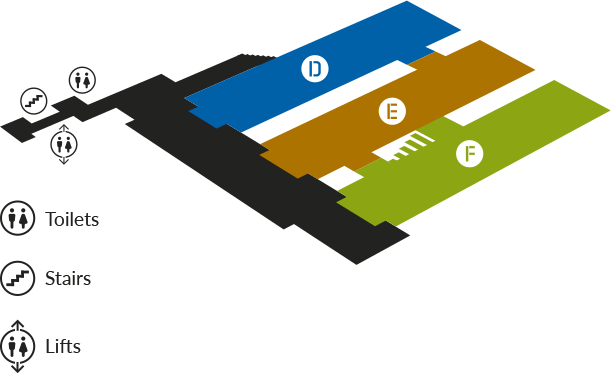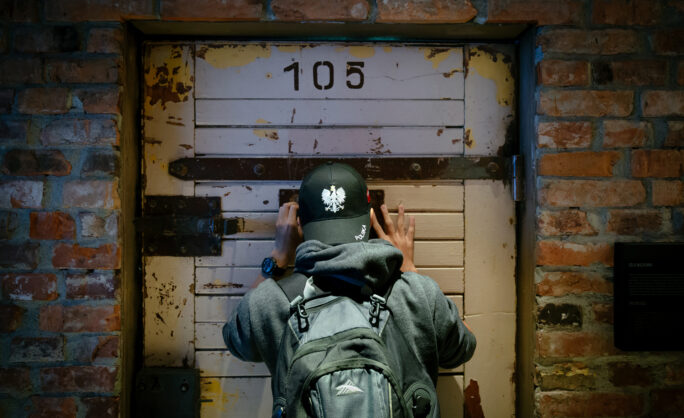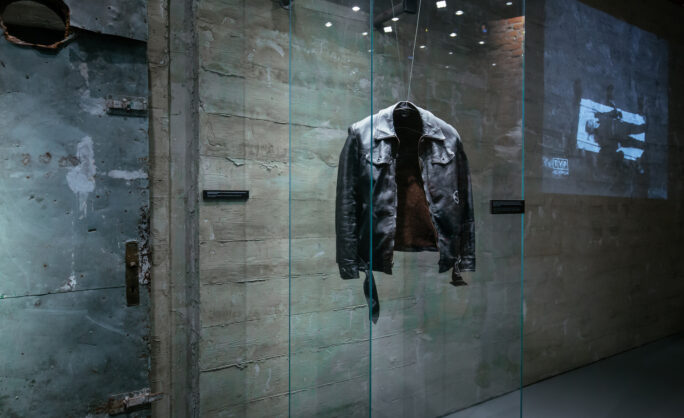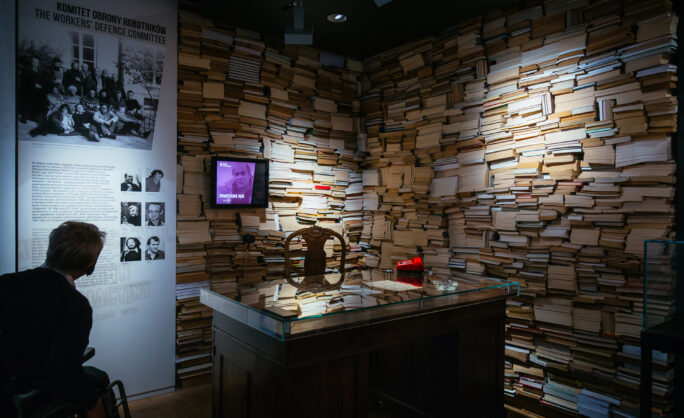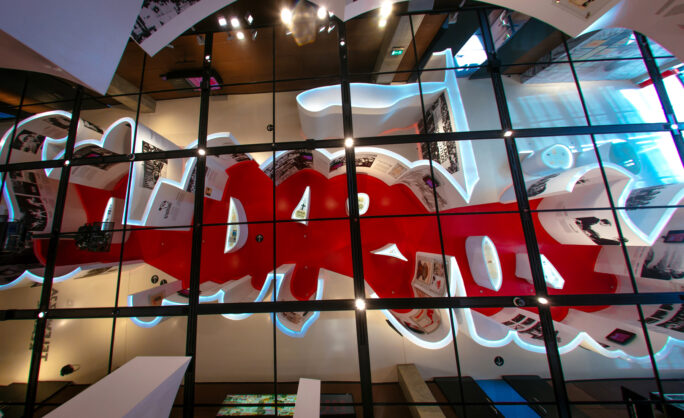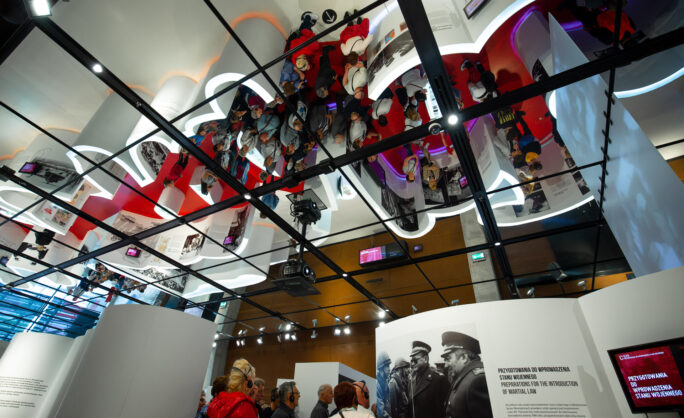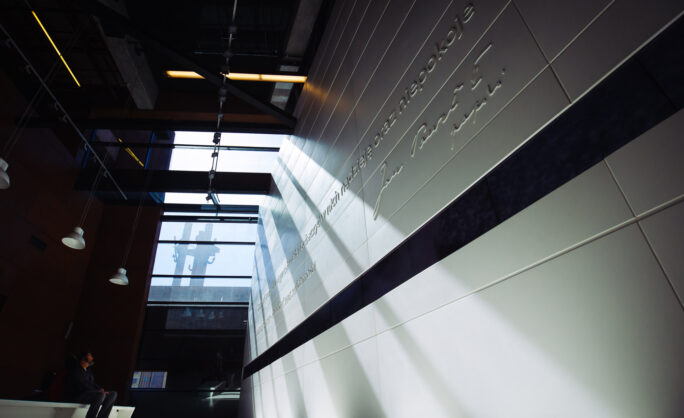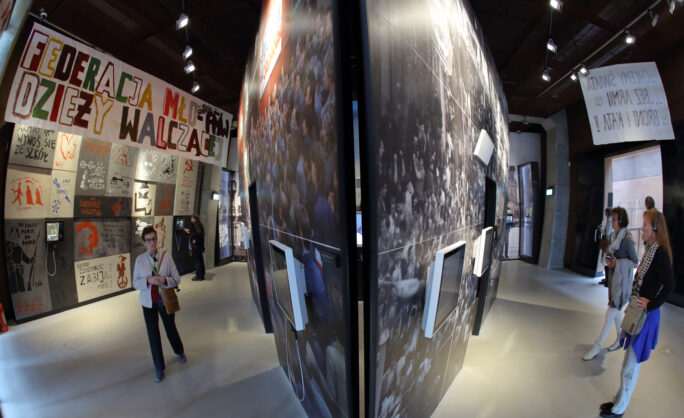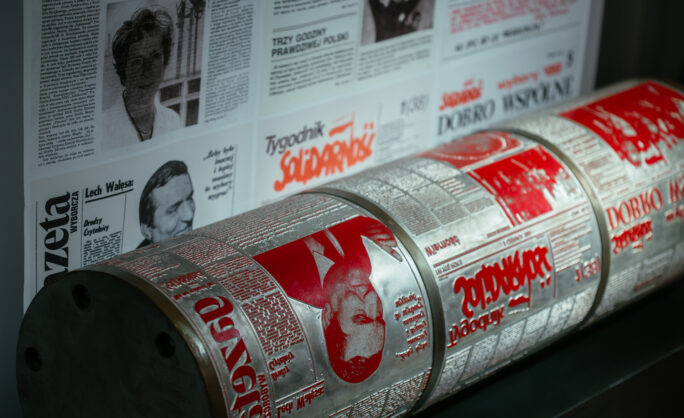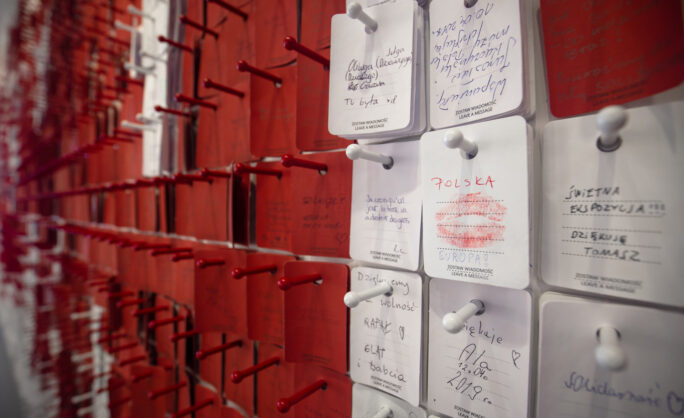

Permanent Exhibition
- May — September
- Monday – Friday | 10 a.m. – 7 p.m.
- Saturday – Sunday | 10 a.m. – 8 p.m.
- October — April
- Monday, Wednesday – Friday | 10 a.m. – 5 p.m.
- Saturday – Sunday | 10 a.m. – 6 p.m.
- Tuesday | closed
The permanent exhibition, devoted to the history of Solidarność and to changes that it triggered in Central and Eastern Europe, occupies the main part of the ECS building. It takes up nearly 3,000 square meters of space in the 1st and the 2nd floor. It is divided into seven rooms. Visitors spend approximately 2 hours there. The state-of-the-art exhibition is narrative in character – it immerses the visitor in history told by archival exhibits, documents, manuscripts, photographs, video presentations, and interactive installations. Every visitor is encouraged to make their own references both to history and to our contemporary times. The multitude of narrations allows multiple subsequent visits – each being a uniquely new experience.
Boards with 21 demands that the strikers hung on the gates of the Shipyard in 1980 – which today are inscribed on UNESCO’s World Heritage List – the overhead crane operated by the legendary trade union activist Anna Walentynowicz, the bullet-pierced jacket of the 20-year-old shipyard worker Ludwik Piernicki, shot in December 1970, the original desk of Jacek Kuroń, one of the opposition leaders – these are just a few of nearly 1800 exhibits available in the permanent exhibition.
Floor 1
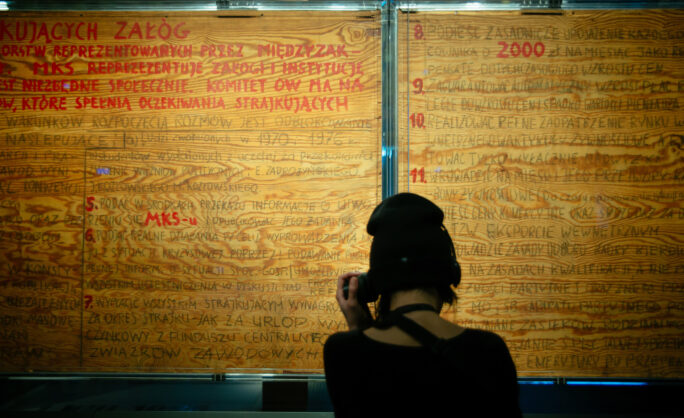
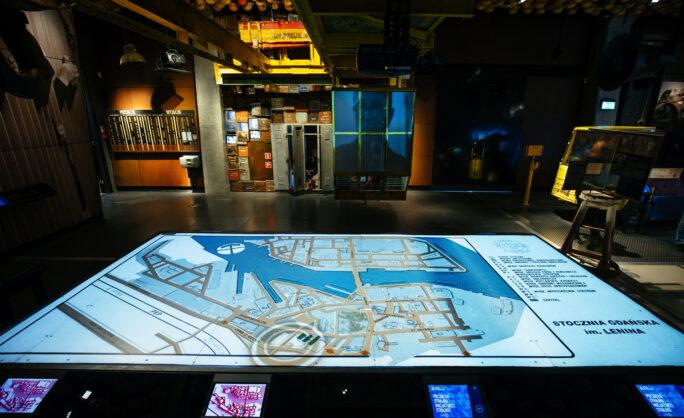
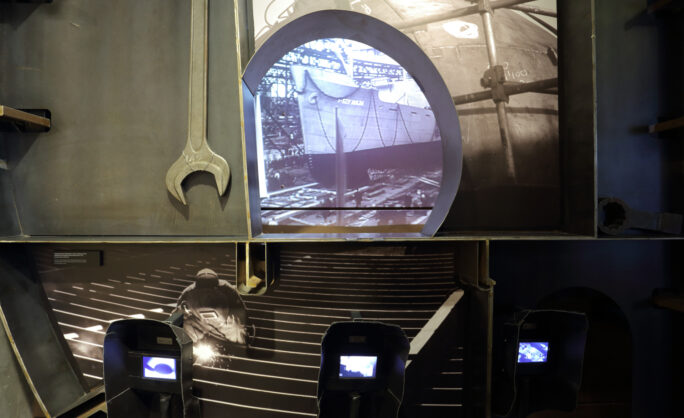
Our most treasured exhibit, the BOARDS WITH THE 21 DEMANDS, is included in UNESCO’s international Memory of the World Register, which contains the most valuable documents of global significance. On 17 August 1980, the workers who occupied the Gdańsk Lenin Shipyard wrote down their key demands to the government authorities and displayed them on the Shipyard’s Gate No. 2. The Solidarność Trade Union emerged as a result of this strike. We also present an original map of the Shipyard as an active illustration of how the workers’ protest developed. There is an electric trolley which served as a transport vehicle, a rostrum, and a confessional during the strike. And there is the overhead crane: the workplace of Anna Walentynowicz, whose dismissal was one of the reasons for the outbreak of the strike.
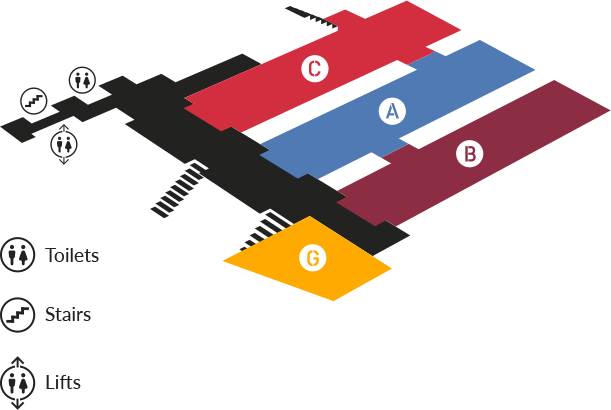
Floor 2



Mass arrests, brutally crushed strikes and demonstrations, and the delegalisation of the Solidarność Trade Union: martial law was introduced in Poland on 13 December 1981. The authorities trampled the post-August hopes but the spirit of hope survived in the nation, only that the desire to live a life in freedom had to go underground. This room features a STAR Police truck which was used to transport the arrested oppositionists, an artist’s rendition of Gdańsk Shipyard’s Gate No. 2 crushed by army tanks, and a genuine opposition printing press built by Bronisław Sarzyński from parts including those from a washing machine. The introduction of martial law in Poland caused a massive response worldwide. Many countries hastily began to organise aid and money collections; transports with medicines, clothes, food and medical equipment were dispatched. On the wave of support for the freedom aspirations of the Polish people, associations of Solidarność with Solidarność were established in many countries. We commemorate all these initiatives in an installation dedicated to the world’s response to martial law.
